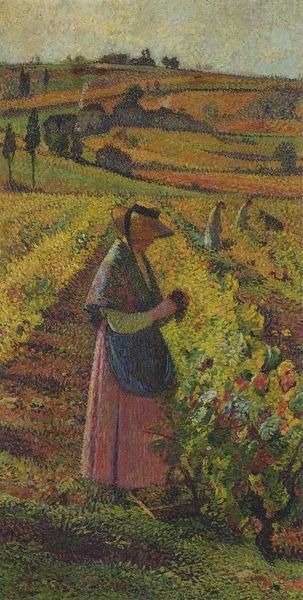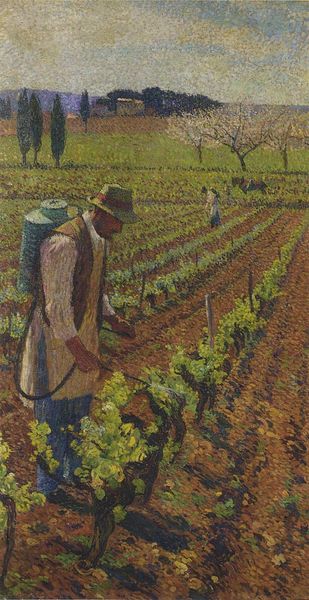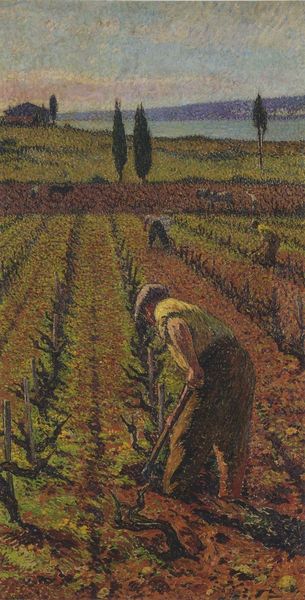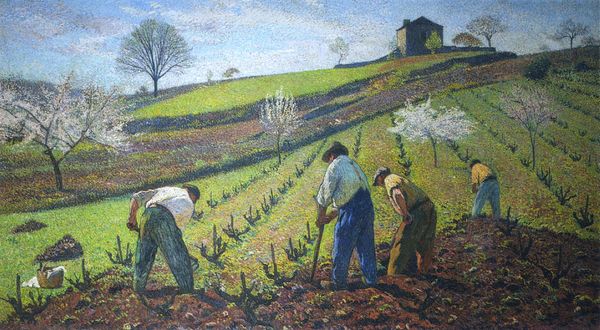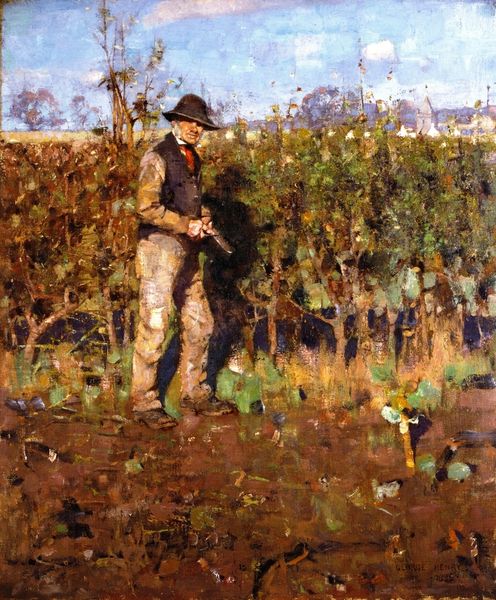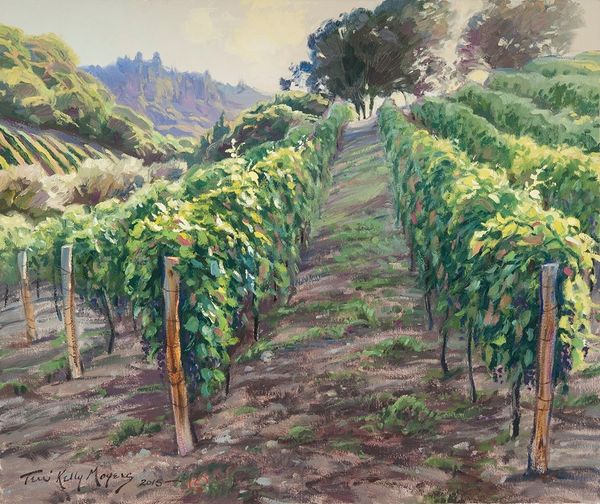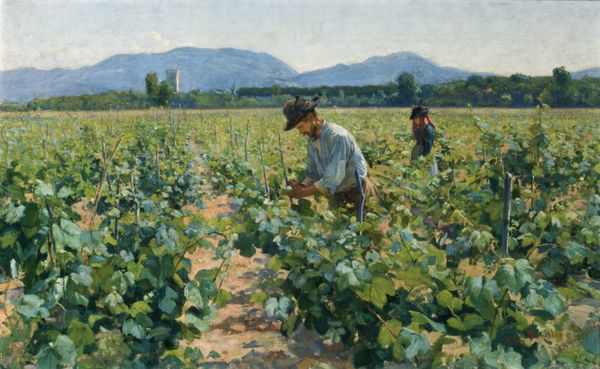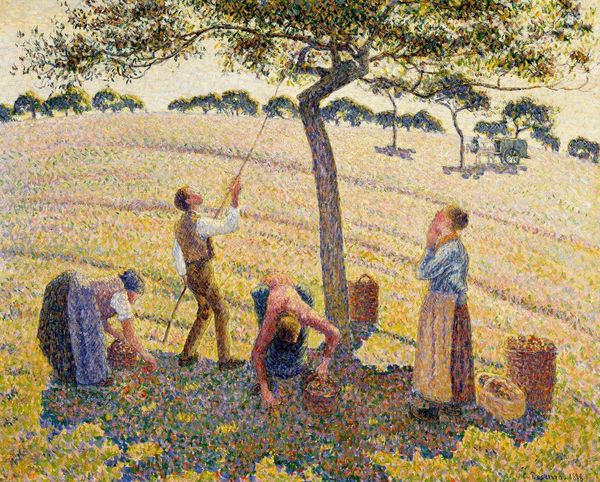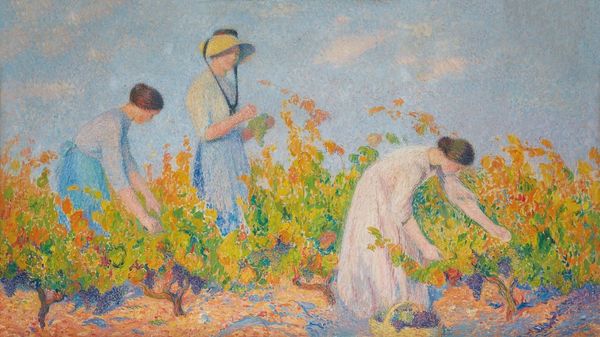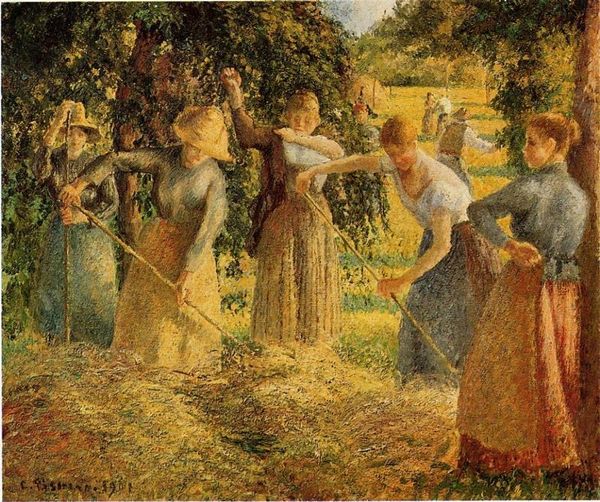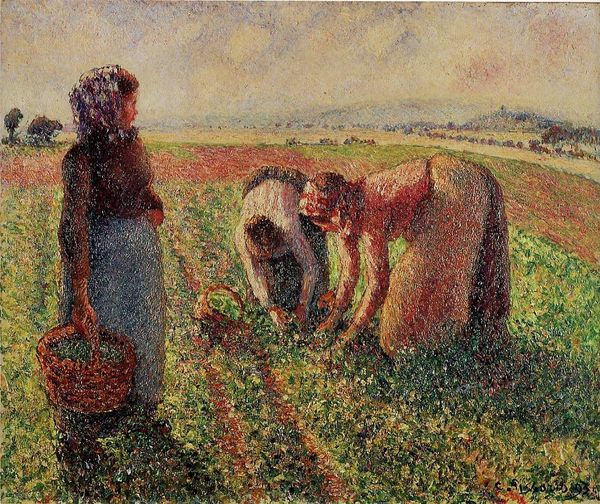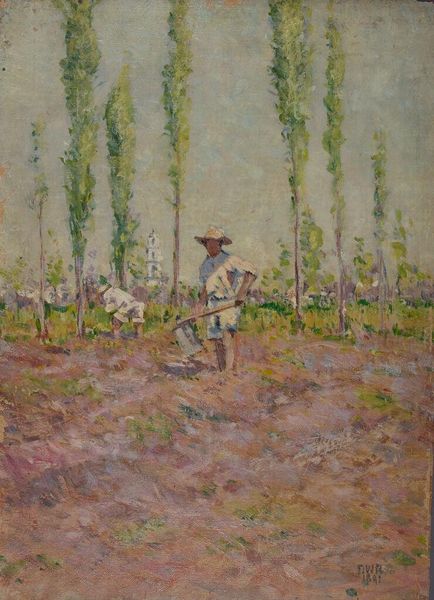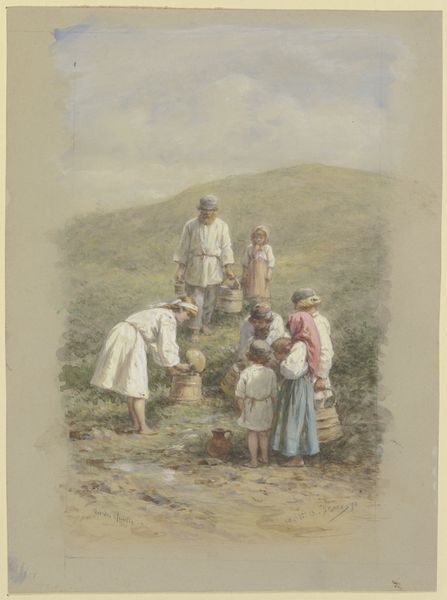
painting, plein-air, watercolor
#
water colours
#
painting
#
plein-air
#
landscape
#
oil painting
#
watercolor
#
genre-painting
#
realism
Copyright: Public domain US
Editor: Here we have Paja Jovanovic’s "Vrsac Triptych," painted in 1895, a series of watercolor and oil paintings. It gives me a sense of rural life through linked scenes. What strikes you most about this piece? Curator: What jumps out at me is the explicit depiction of labor, segmented across the panels, each portraying a different stage of agricultural production: trade in the left panel, harvesting grapes in the center, and wheat gathering on the right. Jovanovic uses different materials—watercolors and oils—each playing a role in illustrating labor within these settings. Does the juxtaposition of these different materials make you consider the process behind creating the work itself? Editor: Yes, the blending of oil and watercolor techniques wasn't immediately apparent but influences how each part feels distinctly…processed, somehow. How does the form—being a Triptych—affect the viewer’s understanding of work in these agricultural systems? Curator: The triptych format suggests a narrative of production—emphasizing not only distinct stages of production, but creating a clear visual order out of otherwise perhaps equally important tasks. Note how plein-air painting embeds an understanding of natural resources and their use through agricultural labor; it represents a deep connection to land exploitation that fuels a specific market economy visible within the composition. What social class do you imagine makes up the population of this particular marketplace depicted? Editor: Based on clothing and labor shown, I'd guess mostly middle class interacting directly with the farming class that sustains them, the former owning or reselling the commodities processed. Considering this view through a materialist lens makes it very evident! Curator: Precisely! Viewing artistic creations this way invites questions regarding social hierarchies, production methods, and underlying structures supporting artistic creation. Understanding these facets of society truly completes our vision. Editor: I completely agree, I learned that there is a clear intent and production displayed through technique and the material world. It broadens my understanding of material culture.
Comments
No comments
Be the first to comment and join the conversation on the ultimate creative platform.
